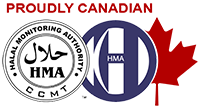Halal is a Qur’anic word that implies permitted, acceptable, and legal. All Muslims must perform this responsibility. It means “permissible for eating and usage by Muslims” when it comes to food. The preference for halal cuisine will immediately rise as the Muslim population grows. The Muslim’s number is predicted to increase by 73 percent from 1.6 billion in 2010 to 2.8 billion in 2050, as the world’s population is expected to expand by 35 percent in the following decades. However, today’s increasing demand for halal meat is not limited to Muslim consumers.
Establishing a halal hub is a concerted effort of various industry players in food, pharmaceuticals, cosmetics, packaging, logistics, and services worldwide. This phenomenon depicts that meat “halal” has become a universal concept. It is no longer restricted to the slaughtering of animals or is merely free from alcohol and swine. Still, it covers the whole process in production and services.
Furthermore, the meat quality of animals slaughtered using halal methods is better. According to the study, the halal system can help the meat sector provide a high quality, safe product while increasing its marketability. They also stated that halal certification by HMA Canada offers non-Muslim consumers a strong identification of high-quality products. The certification is also seen as a need to join the global halal market, assist businesses in meeting local regulations, and expand their market.
Despite the strict criteria before releasing the halal certificate and logo by HMA, it is highly recommended that entrepreneurs take this as an opportunity. They need to realize and understand the importance of halal certificates and labels in their business strategy. This recognition is essential since it is difficult to penetrate the international market without the halal certification and logo. The previous trend shows that non-Muslim entrepreneurs dominate the application for a certificate and halal logo.
In many nations, meat counterfeiting is a persistent problem in the food business. This unequal treatment can harm a country’s economy and its inhabitants’ confidence and health. It can also exacerbate allergies and endanger religious beliefs.
The whole supply chain must be halal from farm to fork to get halal-certified in Canada. As a result, to produce high-quality halal meat Toronto, the process must begin from the source of the animals, where appropriate farm practices, pre-slaughter management, the slaughtering procedure, and post-slaughter management must begin to be considered.
The Halal Monitoring Authority (HMA) recognizes the complexities of the food business and has created a three-part inspection plan that spans the whole supply chain, from abattoirs, slaughterhouses, and manufacturers through middlemen (processors and distributors), and ultimately retailers (butchers and food outlets). HMA’s method entails poultry, meat, and other goods from the point of origin through the end of the slaughter, packing, and delivery. HMA labeling and certification are available to help you make the best Halal decision.
Research conducted depicted that the Canadian people are highly confident with the HMA halal logo. They would not even proceed with any transaction if they discovered the food had no halal label imprint. This shows that consumers are becoming more careful in their purchasing behavior, thus giving an advantage towards halal logo holders. Hence, the halal logo plays a significant role in purchasing decisions. The consumers’ caution may be a response to various alarming cases of contaminated halal food.
In the meat industry, post-slaughter management is one of the crucial stages in determining meat quality. At this stage, shelf life and hygienic maintenance of the meat product are vital. In the halal system, the aspect, which covers nutritional, quality, cleanliness, and safety, would demand the meat be free from any microbiological, physical, and chemical hazards. Thus, meat must be handled or processed hygienically to avoid cross-contamination after the slaughtering process. This is because the cleanliness of the processing area could preserve the meat quality by reducing the risk of meat being contaminated with any microbiological hazard such as Salmonella spp. The beef also should be appropriately stored in a designated area such as a cold or chilled room with a suitable temperature. Even the transportation storage also needs to be monitored to prevent temperature abuse, leading to microbial growth. By doing so, the quality of the meat could be maintained with longer shelf life. Therefore, from processing up to transportation, the risk of potential hazards at any level must be eliminated to safeguard meat.
Halal system in meat production includes the good husbandry practice of animals on the farm, animal welfare during pre-slaughter management, slaughtering process, and post-slaughter management with halal meat concept. As a benefit, halal meats are produced to fulfill the demands of Muslim consumers and non-Muslim consumers due to the stringent standard in hygiene and sanitation. Therefore, by practicing the halal system, the industry players will obtain halal certification, which has been considered the precondition in entering the global halal market.



